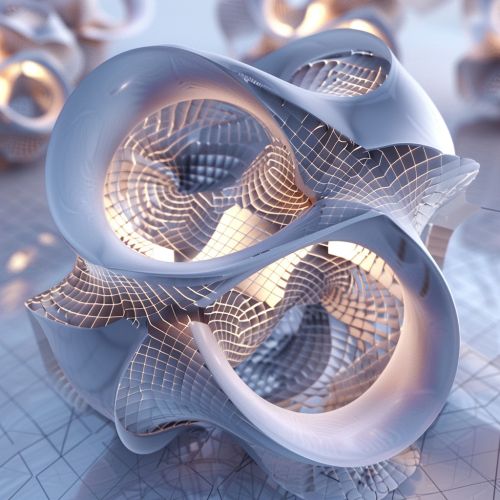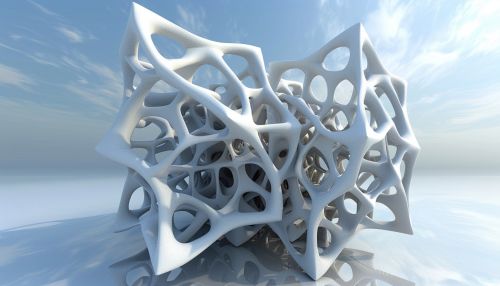Lie Groups: Difference between revisions
(Created page with "== Introduction == A Lie group is a mathematical structure that combines the properties of both a differentiable manifold and a group. Named after Norwegian mathematician Sophus Lie, they serve as the principal language of the physical sciences, particularly in the field of quantum mechanics. == Definition == Formally, a Lie group is a group that is also a finite-dimensional, smooth manifold, such that the group operations of multiplication and inversion a...") |
No edit summary |
||
| (One intermediate revision by the same user not shown) | |||
| Line 32: | Line 32: | ||
[[Category:Physics]] | [[Category:Physics]] | ||
[[Image:Detail-77799.jpg|thumb|center|A 3D representation of a Lie group, showing a complex, intertwined structure.|class=only_on_mobile]] | |||
[[Image:Detail-77800.jpg|thumb|center|A 3D representation of a Lie group, showing a complex, intertwined structure.|class=only_on_desktop]] | |||
Latest revision as of 20:21, 7 May 2024
Introduction
A Lie group is a mathematical structure that combines the properties of both a differentiable manifold and a group. Named after Norwegian mathematician Sophus Lie, they serve as the principal language of the physical sciences, particularly in the field of quantum mechanics.
Definition
Formally, a Lie group is a group that is also a finite-dimensional, smooth manifold, such that the group operations of multiplication and inversion are smooth maps. In other words, if G is a Lie group and g and h are elements of G, then the map (g, h) → gh is a smooth map from G × G to G, and the map g → g^−1 is a smooth map from G to G.
Structure of Lie Groups
The structure of a Lie group is determined by its Lie algebra, a vector space equipped with a binary operation called the Lie bracket. The Lie algebra of a Lie group captures much of the group's structure, and many properties of the group can be deduced from its Lie algebra.
Examples of Lie Groups
Some of the most commonly studied Lie groups include the general linear group GL(n, R) of invertible matrices, the special linear group SL(n, R) of matrices with determinant 1, and the orthogonal group O(n) of orthogonal matrices.
Properties of Lie Groups
Lie groups have many properties that make them central to the study of continuous symmetry. For example, every Lie group is a topological group, and the smooth structure of a Lie group gives rise to a natural measure, called the Haar measure, which allows for the integration of functions over the group.
Lie Groups in Physics
Lie groups play a crucial role in modern physics. They provide the mathematical framework for describing the symmetries of physical systems, which in turn underlie the fundamental laws of physics. For example, the Poincaré group is the symmetry group of special relativity, and the gauge group of a quantum field theory describes its internal symmetries.
See Also


